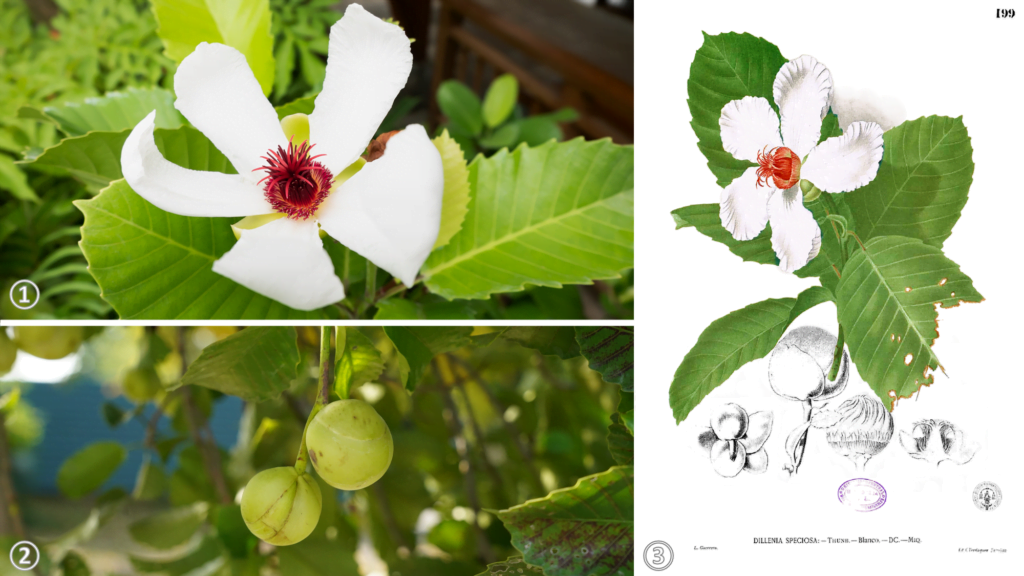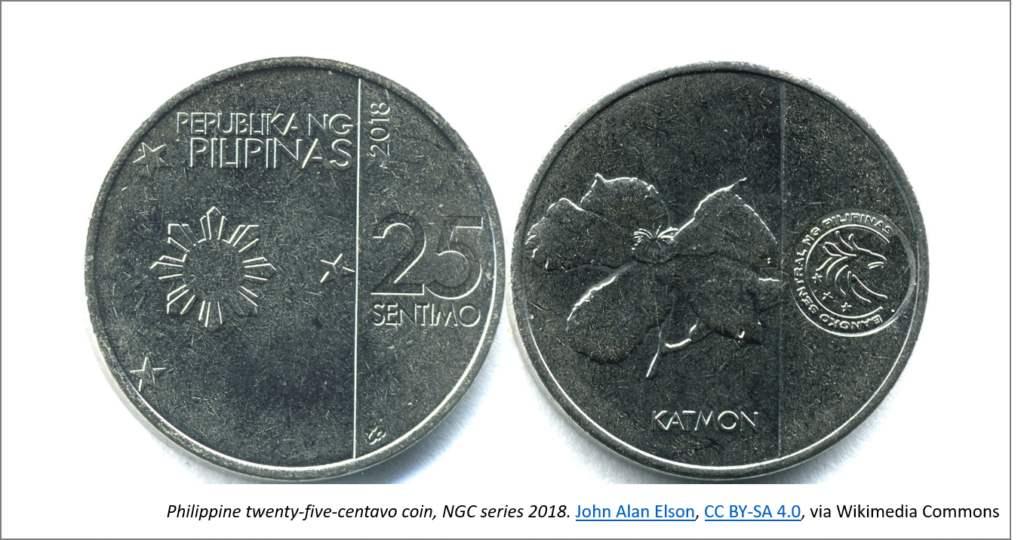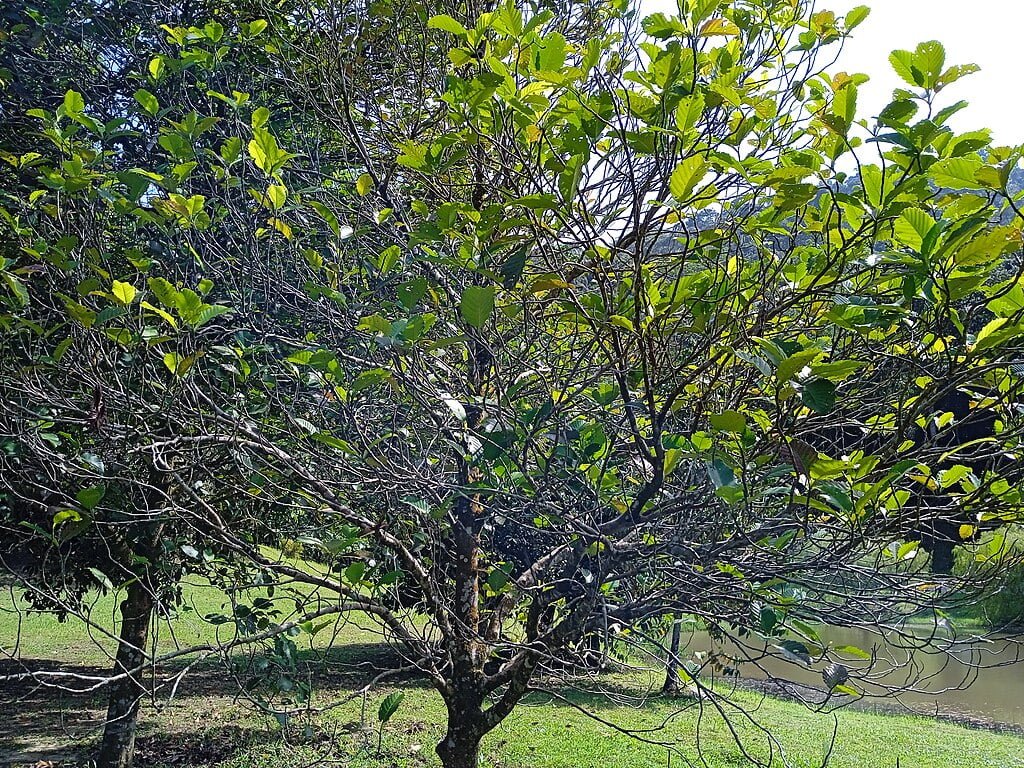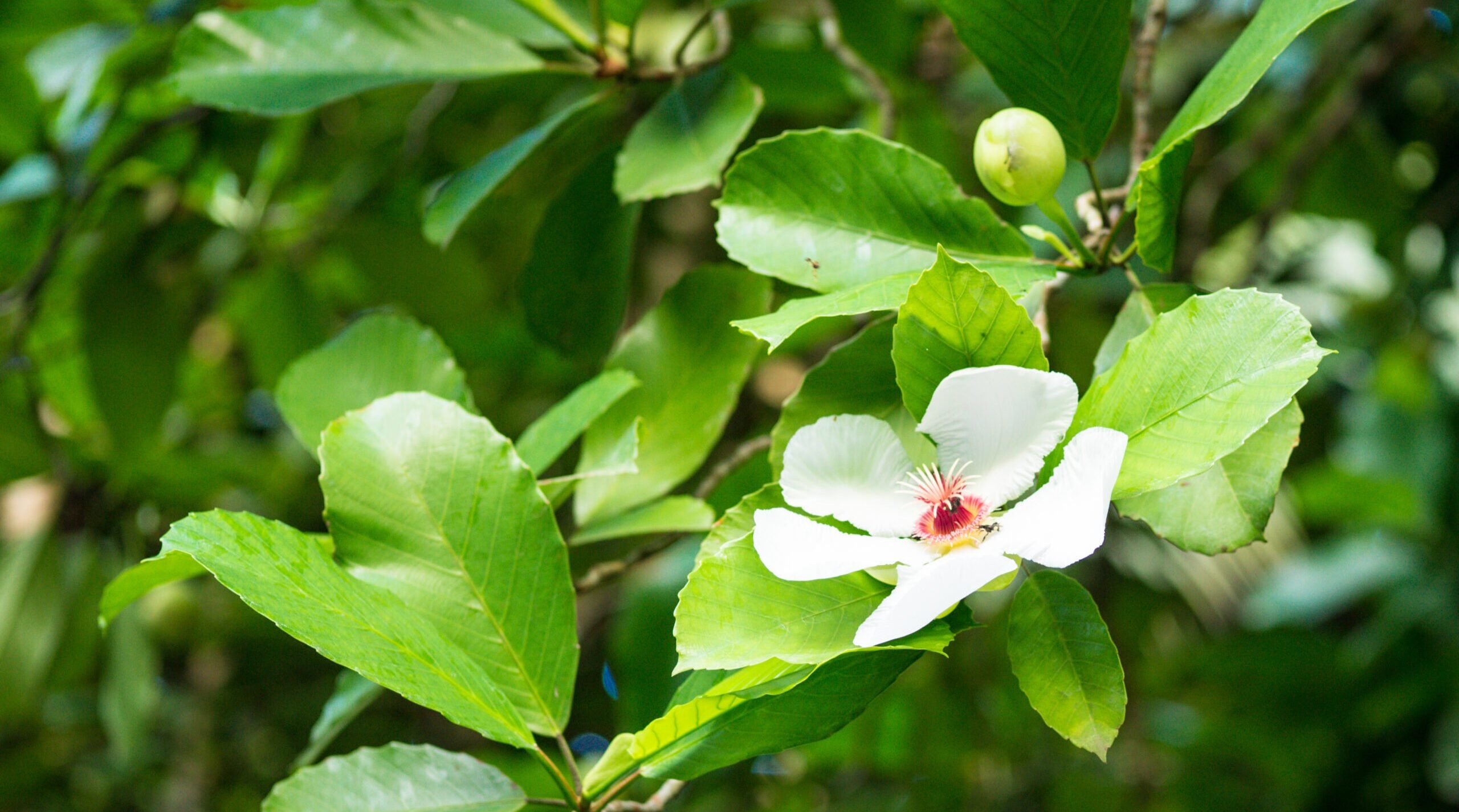Katmon tree (also spelled as Catmon), scientifically known as Dillenia philippinensis, is a unique tropical tree native to Southeast Asia, particularly the Philippines. This tree is renowned for its attractive, evergreen foliage, aromatic flowers, and, most notably, its delicious and nutritious fruit.
In this comprehensive guide, we’ll explore the Katmon tree and its delectable fruit, shedding light on its characteristics, cultural significance, health benefits, and even some tips for cultivating this remarkable tree.
Katmon Tree: Characteristics and Appearance
Katmon trees, scientifically known as Dillenia philippinensis, are medium to large-sized evergreen trees that can reach up to 25 meters in height. They have a distinct appearance, making them easily recognizable:

Leaves
Katmon tree leaves are dark green, oblong or elliptical in shape, and typically measure 20 to 40 cm in length. Their glossy appearance adds to the tree’s aesthetic appeal.
Flowers
Katmon trees bear large, fragrant flowers with five white petals. These blossoms, which are solitary and terminal, can reach up to 10 cm in diameter, making them highly ornamental and a source of visual delight.
Fruit
The Katmon fruit is oval in shape, ranging from 5 to 7 cm in diameter. It features a resilient rind that transitions from greenish-yellow to brownish as it ripens. The fruit’s flesh varies from sweet to slightly sour, depending on its level of maturity, offering a delightful blend of flavors.
Cultural Significance of Katmon
The Katmon tree holds cultural significance in the Philippines and some neighboring countries. Here are a few ways in which it is valued:
Food
Katmon fruits are versatile in their culinary uses. They are enjoyed fresh, and their tangy flavor is a favorite in traditional Filipino cuisine. Additionally, Katmon fruits are utilized to create preserves, jams, and beverages, adding a unique tropical twist to various dishes and drinks.
Medicinal Uses
In traditional medicine, the Katmon tree’s leaves and bark are harnessed for their potential health benefits. These parts of the tree are believed to possess antibacterial and anti-inflammatory properties, making them valuable for treating certain ailments and promoting well-being in traditional healing practices.
Timber
The Katmon tree is not just about its fruit and leaves; it also has practical applications. Its wood is known for its durability and sturdiness, making it a valuable resource in construction and furniture making. The timber from the Katmon tree serves as a testament to its utility beyond its aesthetic and culinary attributes.
Did you know?
You could see the Katmon flower featured on the reverse side of the Philippine twenty-five centavo coin since 2018 as part of the New Generation Currency Coin Series.

Health Benefits of Katmon Fruit
Katmon fruit is not just a delightful treat; it’s a treasure trove of health benefits that can positively impact your well-being:
Rich in Nutrients
Katmon fruit is a nutritional powerhouse, brimming with essential vitamins and minerals, including:
- Vitamin C – Known for its immune-boosting properties.
- Vitamin A – Essential for healthy vision.
- Calcium – For strong bones and teeth.
- Potassium – Supporting various bodily functions.
Incorporating Katmon fruit into your diet enriches your nutrient intake, contributing to overall vitality.
Antioxidants
Katmon fruit serves as a bountiful source of antioxidants, playing a pivotal role in combatting harmful free radicals within your body. Regular consumption of Katmon may help mitigate the risk of chronic diseases and promote long-term health.
Digestive Health
The dietary fiber found in Katmon fruit actively promotes digestive health by facilitating the smooth movement of food through your digestive system. This fiber content aids in preventing constipation and maintains an efficient digestive process.
Immune System Support
Katmon’s noteworthy vitamin C content offers valuable support to your immune system. By consuming Katmon, you assist your body in its battle against infections and illnesses, reinforcing your natural defense mechanisms.
Weight Management
The fiber in Katmon fruit is a beneficial tool for weight management. It creates a sensation of fullness, reducing the likelihood of overeating. This characteristic is particularly advantageous for individuals seeking to maintain a healthy weight and control calorie intake
Cultivating Katmon Trees
If you’re interested in growing your own Katmon tree, here are some tips to get you started:

Climate
Katmon trees thrive in tropical and subtropical climates, making them well-suited for regions with warm temperatures. They prefer well-drained and fertile soil, which allows for proper root development. Additionally, abundant sunlight is essential for the healthy growth of Katmon trees, so planting them in sunny locations is ideal.
Propagation
Katmon trees can be propagated from either seeds or cuttings. When using seeds, it’s important to plant them in well-prepared soil, ensuring they have the right conditions to germinate and grow. Alternatively, cuttings can be rooted in pots, providing a viable option for propagation.
Watering
Catmon trees require regular watering, especially during dry seasons. It’s essential to keep the soil consistently moist without allowing it to become waterlogged, as this can lead to root rot. Adequate and consistent moisture is crucial for their health and vitality.
Pruning
Pruning is an important aspect of Katmon tree care. Regular pruning helps maintain the tree’s shape, remove dead or diseased branches, and encourage new growth. It’s a way to ensure the tree remains healthy and visually appealing.
Fertilization
To provide essential nutrients to the Katmon tree, use a balanced, slow-release fertilizer. This will promote optimal growth and overall health. Proper fertilization is key to ensuring that the tree has access to the nutrients it needs for robust development.
Conclusion: Embrace the Katmon Tree and Its Gifts
The Katmon tree and its delicious fruit offer a multitude of benefits, from its cultural significance to its potential health advantages.
Whether you’re a food enthusiast, a gardener, or someone interested in the culture of the Philippines, the Katmon tree is a fascinating subject to explore. So, consider planting one in your garden and enjoy the beauty and taste it brings to your life.
Also Read: Kaong: The Sweet Sugar Palm Fruit, Growing Tips, And Nutritional Benefits
Well, what do you think about the article?
Did you enjoy reading “Katmon Tree, Fruit And Benefits: A Comprehensive Guide“? We really hope that you have enjoyed this article. If you have any thoughts or comments about this post, please feel free to share them in the comment section below. We appreciate your feedback and would be glad to hear from you.
To see more content like this check the gardening section of Money For My Beer.

Lara is a freelance content writer and a cat mom to three furbabies, Mizu, Haru and Sora.
She graduated with a Bachelor’s Degree in Architecture and is a registered and licensed Architect. Aside from writing, she is fond of growing cacti and succulents and is a DIY type of girl.
During her free time, she engages herself in water-colouring and crocheting, while catching-up with an old tv series she just discovered. Lara loves to explore new places, but most of the time stays in her hometown province, reading historical romance novels over a cup of coffee – or matcha.

